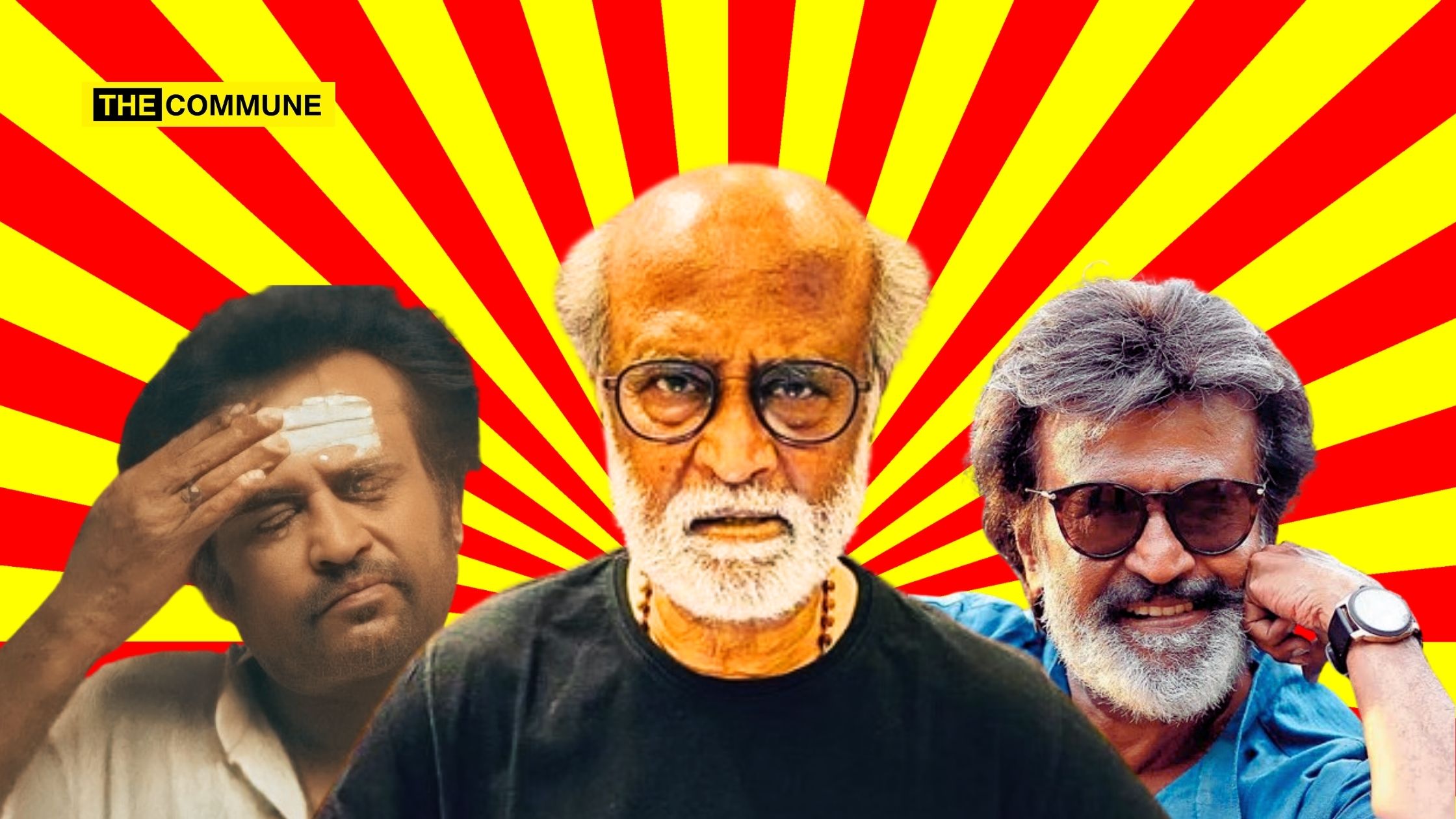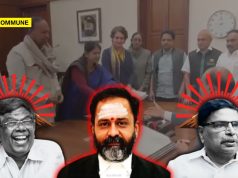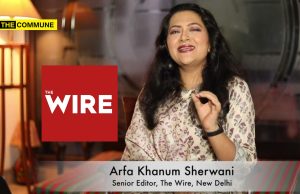
There is a famous comedy scene from the 2004 Tamil film Kaadhal. The scene set in the room of a bachelors mansion, is a conversation between two aspiring actors and supposedly a director who is jobless. One of the actor aspirants going by the name Virchikakanth has his target set. “Nadicha hero than sir!” (I’ll act only as a hero), he says to the director when asked about whether he would be willing to do villain roles or character roles. “I’ll wait for it to happen”, Virchikakanth says. This character Virchikakanth hopes that a miracle would happen and that he would become hero one day.
Like Virchikakanth, Rajinikanth too was not ready to settle for being a leader of opposition (villain role) or coalition partner (character role). Though Rajinikanth didn’t aspire to be the hero in Tamil Nadu politics, which is becoming the Chief Minister, he wanted to emerge victor and bring about a ‘system change’. Like Virchikakanth, he too hoped that a miracle (adhisayam and arpudham) would happen where all of a sudden Tamil Nadu people would feel rejuvenated and vote for him. But realpolitik doesn’t work like a Sundar C movie. (Refer: Arunachalam, the film). Sanity prevailed and he called it quits to his political innings dejecting many of his ardent fans.
But his politicking hasn’t stopped. He continues to play the good cop, bad cop and has of late turned out to be a milksop through his actions and utterances in reel and real life.
One day he is in Ayodhya wearing a saffron shawl and a few days later his daughter Aishwarya Rajinikanth swears that he is not a “Sanghi”.
He is a devotee of Mahavatara Babaji and often goes to the Himalayas like a sadhu but has a problem with people painting him saffron.
So, who is Rajini? Is Rajini a Sanghi or not? To find answer to this question, it is important to understand the evolution of Rajinikanth and the various positions he has taken over the course of time. People must look back and reflect on Rajini’s positions before taking a position on Rajini.
The Good Cop Rajini
Rajinikanth is no doubt a self-made man and has earned his place as a ‘Superstar’. He definitely has the grace of God and the blessings of his fans to be where he is today and he has always been grateful for that. At a time when Kollywoodias embraced the Dravidian ideology, he proudly sported the sacred ash on his forehead and a rudraksh over his neck. Being a devotee of Raghavendra Swami, he ensured that he made a film on the Hindu saint as his 100th film. He also paid his tribute to Mahavatar Babaji by making Baba in 2002 in which he takes on the Dravidian Model of atheism and corrupt politicians with Hinduism. And when the film bombed at the box office, he compensated the distributors from his own pocket.
Baba was also a film that put him in political cross hairs with Dravidianist politicians. Karunanidhi, the witty politician that he was, saw to it that the film faced troubles. There were rioters who assaulted movie theatres and destroyed movie prints in numerous locations. Pattali Makkal Katchi (PMK) created a furore over Rajinikanth smoking in the movie. And guess how Rajinikanth dealt with all this? The daring Rajini gave a go ahead to his fan clubs to vote against DMK-PMK alliance and elect candidates of the AIADMK and BJP in the 2004 Lok Sabha elections. This put even the great Karunanidhi in backfoot who later asked Ramadoss to be “patient” until the elections were over. Such was the audacity of Rajini back then.
In 2011, Rajinikanth declared his endorsement of the anti-corruption movement led by Anna Hazare, generously providing his commercial wedding venue, the Raghavendra Kalyana Mandapam in Chennai, for the India Against Corruption members to conduct their fast at no charge.
But this is a Rajini we all know – the superstar actor, the humble and simple man with a spiritual bent.
But there is also the other face of Rajini.
The Bad Cop Rajini
Rajnikanth made a cameo in the film, Valli (1993) in which the actor incorporated messages discouraging Hindus from advocating for Sri Rama’s birthplace. This film produced by Rajinikanth himself had a theatrical release when the watershed Ram Janmabhoomi movement led by Hindu outfits and the BJP, was at its zenith and had culminated in the demolition of the Babri Masjid. Before that he had badmouthed Lord Rama in a black and white movie hailing Ravana as the true gentleman.
In the 2018 film “Kaala”, directed by rabid anti-Hindu filmmaker Pa. Ranjith, Rajinikanth is the black shirt-clad messiah of a chawl fighting the saffron shawl and tilak sporting evil men. There were scenes where Hindu festivals were demonized, with Lord Vinayaka and Lord Ram shown in negative light. Every villain in the film, including the main antagonist Hari (another name for Lord Vishnu), is a practicing Hindu, sporting religious symbols of saffron/Hinduism. Hari frequently talks about Krishna and Rama while justifying his evil deeds and Kaala threatens him, “If stealing my land is your God’s Dharma, then I won’t spare your God either.” It even contained a blatant reference to prominent BJP leader H. Raja to reinforce negative stereotypes about the Narendra Modi Government.
The lead up to the climax show Hari Dada listening to a discourse on Ramayana with full devotion while Rajini, the Ravana fights the saffronists.
In 2018, Rajinikanth and Sun Pictures again collaborated for Petta directed by Karthik Subbaraj , a known sympathizer of LTTE and naxals like Daniel/Thirumurugan Gandhi. Petta too took potshots at Hindutva and on the other hand, Rajini helps in Anwar getting married to Anu.
Both Petta and Kaala took potshots at Hindutva that showed anyone with a tilak on a forehead as a religious bigot. This was the time when Tamil Nadu was riding on a huge anti-Modi and anti-Hindutva wave, thanks to the toiling efforts of the DMK and allies that used every opportunity to portray Modi as anti-Tamil.
Rajini tried to capitalize on this sentiment by positioning himself as being against Hindutva and the BJP. Just like how he added fuel to the fire in 1996 elections, Rajini did the same although not explicitly for the 2019 Lok Sabha elections.
He even distanced himself from outrightly coming in support of Modi (like he did for demonetisation) in the run up to the elections. He struck a tactfully eluding note with his ‘ten persons ganging against one’ remark. NDA alliance (ADMK) went with 1 seat from Tamil Nadu.
Looks like now, he’s also ready to do his bit ahead of the 2024 Lok Sabha elections with Lal Salaam made by his daughter Aishwarya Rajinikanth, and Vettaiyan made by Dravidainist propagandist TJ Gnanavel of ‘Jai Bhim’ fame, in the pipeline. In Lal Salaam which is releasing on 9 February 2024, Rajinikanth plays Moideen Bhai, the good Muslim while another villain (Adithya Menon) is portrayed with a nice red tilak.
Playing Good Cop In Real Life And Bad Cop In Reel Life
Nobody can play good cop – bad cop like how Rajini does. Reel Rajini instigates people to protest while real Rajini says that the state would turn into a cremation/burial ground if there are needless protests while also rightly pointing out how anti-social elements infest peaceful protests and unleash mayhem. Reel Rajini dances to the tunes of Dravidianists and glorifies ideologies of EVR while real Rajini talks about EVR’s anti-Hindu rally while speaking at Thuglak event. Reel Rajini negatively characterizes Lord Ram while real Rajini goes and attends the Pran Pratishtha ceremony of Ram Lalla at Ayodhya. Reel Rajini is a Moideen Bhai who looks at the side of saffron-shawl clad man and says that venom has been injected into people by mixing religion and sports, while real Rajini speaks of justice being done after 500 years with the building of Ram Temple. You get the point right? As the popular Tamil saying goes – ipdi oru uruttu, apdi oru uruttu (roll one this side and another that side).
But it is a fact that the impressions created through the silver screen has a deeper impact on the psyche of the people and the larger society. And so, the reel and real life Rajini cannot be seen in isolation. Real life Rajinikanth chose to work with a rabid anti-Hindu director like Pa. Ranjith. Real life Rajinikanth gave in to the negative portrayal of Lord Ram and Lord Vinayaka and demonized Ram Bhakts. Real life Rajinikanth chose to do Petta that showed Bajrang Dal in bad light. Real life Rajinikanth chose to be a Moideen Bhai in Lal Salaam and justified his daughter’s derogatory usage of the word Sanghi. Real life Rajinikanth has chosen to associate himself with a Dravidianist propagandist director who spewed venom against Brahmins and insinuated Vanniyars as villains. Real life Rajinikanth who is in a position to do the film that he wants, to produce the film that he wants, to influence the filmmaker and modify the script to convey the message that he wants, did not do so.
What prevents the real life Rajinikanth to launch his own production house and produce something like an RRR or Hanu-Man? These are food for thought for Rajini fans inclined towards the nationalistic thought.
The Milksop Rajini
Rajini is said to have become political in the run up to the 1996 Assembly elections when he raised his voice against the then Jayalalithaa government and said “Even God cannot save Tamil Nadu if Jayalalithaa returns to power”. This statement is said to have swayed votes in favour of the DMK-TMC alliance. But there was already public anger against Jayalalithaa for having hosted the multi-crore, Guiness record breaking, extravagant marriage of her adopted son V.N. Sudhakaran when she was in office. The grandiose image of both Jayalalithaa and Sasikala draped in ornate red silk sarees and adorned with jewels came to be identified with corruption. Rajinikanth just added fuel to the already raging fire. The election saw AIADMK getting routed to just 4 seats with even the mighty Jayalalithaa losing from the Bargur constituency.
The Many U-Turns
Knowing that he must have earned the lady’s wrath, Rajini under the pretext of inviting for his daughter’s marriage met Jayalalithaa at her residence in 2004. It would be wrong to speculate on what transpired between the two during their meet but we all know who Jayalalithaa is. The least she would have demanded was an apology to fix relations. Later on he would go on to call her a reincarnation of Ashtalakshmi in 2006 at a function held to felicitate Jayalalithaa. When Jayalalithaa got bail in the disproportionate assets case in October 2014, Rajinikanth congratulated her. In February 2017, Jayalalithaa was later named as a convict along with Sasikala, Elavarasi and Sudhakaran but proceedings were abated owing to her death. Same case, but different positions at different points of time. From proclaiming that even God won’t be able to save Tamil Nadu to liking her to God, Rajinikanth’s tryst with Jaya came a full circle.
Just days after participating in a hunger strike and vociferously attacking the Karnataka political class over the Hogenakkal project in 2008, he made peace with the pro-Kannada groups when his film Kuselan faced problems releasing in Karnataka. “It was a mistake. I have learnt a big lesson. The mistake will not be repeated. I will be careful while speaking in future and make sure that I don’t hurt anybody”, he said.
In 2002, he had pledged ₹1 crore towards linking river waters. 15 years later in 2017, he was reminded of the promise by a group of farmers. There is still no concrete evidence whether such a fund was given to the concerned Ministry.
His film Darbar, had a dialogue that carries a reference to Sasikala which was removed after opposition from Sasikala group. Now people can say that this is the producer’s choice and Rajini has nothing to do with it. Be that as it may, it does send across a message about how serious he was about ‘changing the system’.
Rajinikanth while declaring his entry into politics, had quoted Bhagawad Gita to say that he would be considered a ‘coward’ if he didn’t abide by the compulsions of time. It was only after his political entry announcement that he did films like Kaala and Petta.
In 2019, the pandemic struck and Rajini too suffered a health setback with a kidney transplant and being under immunosuppressants which was cited as the reason for his withdrawal from politics once and for all just ahead of 2021 Tamil Nadu Assembly elections. The DMK and other Dravidianist parties heaved a sigh of relief. And he went on to do films for DMK family-owned enterprises – Sun Pictures (Annathe, Jailer) and Red Giant (Lal Salaam).
Rajinikanth, who released a picture of his ‘angry face’ expressing shock over the custodial death of Jayaraj & Bennix that happened during AIADMK regime has not uttered a word about the many custodial deaths that has happened ever since the DMK came to power.
Is Rajini A Sanghi Or Not?
During the audio launch of her film ‘Lal Salaam’ starring her father, Aishwarya Rajinikanth said “People label my father as a sanghi. I want to assert here that Rajinikanth is not a sanghi. If he were, he wouldn’t have been a part of Lal Salaam.”.
She had said that “only a person with humanity would do Lal Salaam” implying that “Sanghis” lack humanity.
The term Sanghi refers to a devout Hindu, a subscriber of Hindutva ideology, an RSS worker, a support of BJP and Prime Minister Narendra Modi and everything in that spectrum. However, it is often used derogatorily by leftists, Islamists and Dravidianists. It can be inferred from Aishwarya Rajinikanth’s statement that the term ‘Sanghi’ was used pejoratively with a negative connotation.
But Rajinikanth defended and buttressed his daughter’s statement saying she didn’t say Sanghi as a ‘bad word’ and that she was only concerned about her spiritual father being branded a Sanghi when he loved all religions. So, what is Rajinikanth implying here? Does he mean to say that Sanghis are religious bigots?
So, to answer the question – Yes, Aishwarya Rajinikanth is right. Rajinikanth is not a Sanghi and cannot be a Sanghi.
A true Sanghi‘s colour always remains saffron. Only a chameleon changes colours.
Kaushik is a political writer.
Subscribe to our channels on Telegram, WhatsApp, and Instagram and get the best stories of the day delivered to you personally.




